New Chromatography Columns and Accessories at Pittcon 2010: Part I
LCGC North America
This month's installment of "Column Watch" features Ron Majors' yearly report on new products introduced at Pittcon 2010.
Pittcon 2010, referred to in its full name as the 61st Pittsburgh Conference on Analytical Chemistry and Applied Spectroscopy, returned to the massive Orange County Convention Center in Orlando, Florida, from February 28–March 5, 2010. This year's event hosted nearly 1000 instrument manufacturers and 1aboratory suppliers in more than 2000 booths. In addition to attending the exposition, the conferees listened to 2000 technical presentations, checked numerous company seminar rooms, or attended one of 140 short courses.

Ronald E. Majors
Undoubtedly, Pittcon still remains the most important yearly international analytical exhibition, where companies introduce their latest instruments, instrument accessories, software, columns, sample preparation, and other consumable products. Because many past attendees have purchased one or more new products within three months after attending the show, most exhibitors attempt to maximize their booth traffic to meet as many potential customers as possible.
The purpose of this report is to provide information about many of the new separation consumables and accessory products that will be displayed at Pittcon 2010. In some cases, products that were introduced during 2009 but after Pittcon 2009 (1,2) may be included for reasons of completeness. The information is based upon manufacturers' responses to a questionnaire mailed in early 2010. Because of space limitations and the fact that some manufacturers did not respond to the questionnaire, this report cannot be considered an exhaustive listing of all new products that were introduced in Orlando.
However, over the years, these Pittcon introduction summaries have provided a good source of information that would be difficult for one individual to gather during the four days of the exhibition. In addition, the products introduced have shown definite correlations to current research, development, and application activity in the separation sciences.
As in previous years, columns and other products recommended by their manufacturers primarily for biomolecule separations or sample preparation are denoted in the tables with the designation BIO. Some of these products might be used for general high performance liquid chromatography (HPLC) separations as well, but their main emphasis is for biological samples.
In this month's coverage, I will describe new introductions in the areas of HPLC and reversed-phase, normal- and bonded-phase, ion-exchange and ion, size-exclusion, large- and preparative-scale, and specialty chromatography columns. Next month, I will look at gas chromatography (GC) columns, sample preparation products, and hardware, accessories, and small tabletop instruments, mainly for sample preparation.
Trends and Highlights
General: This year, I observed that there was a continued trend in high-throughput techniques, especially in the HPLC, sample preparation, and hardware–accessory areas. In HPLC, there was a further increase in columns and accessories designed to work with ultrahigh-pressure liquid chromatography (UHPLC) products. Many application-specific columns for HPLC and GC were noted as well as more very high temperature GC column introductions. Again at Pittcon were a considerable number of new accessories, hardware, and devices to make the chromatographic laboratory more productive.
HPLC columns: Pittcon 2010 had more sub-2-μm columns for UHPLC but the introductions of additional superficially porous particles give hope to those chromatographers who aren't ready to invest in UHPLC. These columns give the efficiency of sub-2-μm columns but with half the pressure drop, allowing conventional LC instruments to take advantage of fast LC separations at nominal pressures. Hydrophilic interaction chromatography (HILIC) for the separation of polar compounds weakly retained or unretained by reversed-phase chromatography were prominent as were new series of chiral columns. Still, reversed-phase HPLC maintained its dominance. This year, though, had a unusual number of ion-exchange and ion chromatography columns with applications for the separation of monoclonal antibodies, proteins, and trace ionic compounds noted. Additional monoliths were introduced, both polymeric and silica-based, the latter in capillary dimensions.
Gas chromatography: GC columns this year were highlighted with higher temperature limit columns that extend the range of volatility. Application-specific columns are always prevalent and this year was no exception.
Sample preparation: With a continuing trend, polymeric solid-phase extraction (SPE) phases represented a majority of the products seen this year. Water-wettable polymeric phases that can dry out during operation and still have good experimental reproducibility and recovery were more widely available. In addition, they offer mixed mode mechanisms for more effective cleanup. On-line SPE (column switching) columns for repeated use were introduced. QuEChERS is "catching on" as the favored sample preparation technique for pesticides in fruits and vegetables and a number of new convenience products were evident.
Accessories: A total of 40 new hardware products and accessories for LC–ion chromatography, GC, and sample preparation were noted. General chromatography introductions included color-coded syringes as well as certified vials that have tighter tolerances and higher standards of cleanliness. UHPLC-specific products were numerous, as many companies are hopping on this bandwagon. Many sample preparation accessories such as evaporators–concentrators, grinders, cryomills, homogenizers, fraction collectors, and centrifuges were introduced at Pittcon 2010. Additional gas generators also could be found at various booths, especially as workers look for alternatives to helium for GC.
New Series of HPLC Columns and Packings
Each year, manufacturers introduce entire new families of HPLC columns at Pittcon (Table I). For the sake of brevity, I have elected to cover those series here instead of listing each column under individual headings in the modes' tables. In some cases, the series are extensions of existing products but covering additional phases while in other cases, the families are entirely new to the market.
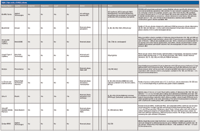
Table I: New series of HPLC columns
The reintroduction of superficially porous particles (SPP) has been called a breakthrough in column technology. Actually, these particles were among the first introduced in the late 1960s but then, the particle sizes were in the tens of micrometers. The latest SPPs are much smaller, the most popular in the 2.7-μm range but the principle is basically the same as the original particles. A solid core of nonporous silica is coated with a thin shell of silica gel, to which a phase such as C8 or C18 is bonded. The thin shell permits the very fast diffusion of either macromolecules or small molecules, thereby improving the "C" mass transfer term of the van Deemter equation. These dense particles have a fairly narrow particle size distribution and pack well in columns, thereby giving a lower "A" term. Some studies have reported a reduction in the "B" term — the longitudinal diffusion term of the van Deemter. The end result is that the overall efficiency of the 2.7-μm particles rival the sub-2-μm columns that have caught on in recent years giving rise to UHPLC because higher pressure instruments are sometimes required. But the SPPs are of a larger particle size (2.7 μm) and therefore do not have the higher pressure drops attributed to the sub-2-μm columns, roughly about 50% lower. Thus, high efficiency at a low pressure allows users to adapt their conventional LC systems without having to invest in UHPLC hardware. So, far, there are only a handful of companies that have introduced SPP for macromolecules and small molecules (Advanced Material Technology, Agilent Technologies, Phenomenex, and Supelco) and examples of new introductions are covered in the respective sections (reversed-phase and specialty columns) of the present column. The Kinetex family of SPP were introduced after Pittcon 2009 and are shown in Table I. Besides the popular 2.7-μm size, they also displayed a 1.7-μm particle that would have a similar pressure drop to the sub-2-μm UHPLC materials but should offer even higher efficiency, perhaps stressing modern HPLC instrumentation in terms of extracolumn contributions to band broadening.
Other new series of HPLC columns were shown by several other companies (Table I). With a wide range of particle sizes (made by the same process and chemistry) from UHPLC to preparative, seamless scaleup and scaledown within a family is possible. Method development can be performed on a short, fast analytical column and then can be scaled up to preparative dimensions with easy method transfer. The Merck Chromolith CapRod columns even go down to nanoLC dimensions. The monolithic phase is formed in situ in the column. It has a low pressure drop and shows better column stability than "home-made" particulate-packed nanoLC columns. The Agilent BioHPLC Ion Exchange and BioMab (monoclonal antibody) series have narrow-bore to semipreparative columns packed with particles ranging from 1.7 μm up to 10 μm (UHPLC to preparative), while the SEC aqueous size-exclusion series has particles as low as 3 μm with a variety of pore sizes.
To illustrate the advantage of having a family of column products based upon standardized media, Figure 1 shows the use of the same VisionHT phase (Grace Davison) that follows lidocaine through the drug discovery process, from preparative purification to high-throughput analytical screening to high-resolution impurity profiling. A method was first developed on a small fast column (Figure 1a), transferred to a 5-μm preparative column (Figure 1b), confirmed purity on a sub-2-μm column under isocratic conditions (Figure 1c), finally running a slow gradient on a long, sub-2-μm column investigating an impurity profile (Figure 1d).
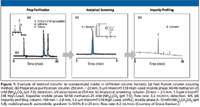
Figure 1
Reversed-Phase Chromatography
As usual, many new reversed-phase chromatography columns were introduced at Pittcon 2010 (see Table II). If one also adds all the reversed-phase chromatography columns covered in the new series, specialty columns, and preparative columns, one can see the dominance of this operational mode clearly. This Pittcon added over 57 new reversed-phase columns to the huge numbers that already exist from past introductions. Silica-based bonded phase columns dominated the introductions again this year (>90%) but polymer-based reversed-phase columns, three organic-silica hybrids, and silica hydride column were also on the scene.
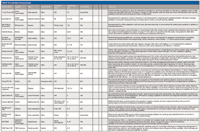
Table II: Reversed-phase chromatography
The C18 (octadecylsilane) functionality this year proved again the most popular with over half of all reversed-phase columns being this alkyl phase. However, this phase isn't always the optimum for all separations and C4, polar-embedded C4, C8, phenyl, phenyl-hexyl, biphenyl, mixed alkyl–ion exchange phases, pentafluorophenyl, organo–silica hybrid, silica-hydride and cyanopropyl phases were made available by various suppliers to present selectivity alternatives. The HILIC columns that have some hydrophobic interaction possibilities will be discussed in the specialty column section.
In keeping with the trend noted in the last few Pittcons, Table II shows a number of introductions of small particle columns in the 2-μm and sub-2-μm range, often referred to as UHPLC columns. These smaller particles have gained attention because column efficiency increases as the particle size decreases, one can achieve faster separations with short columns and can maintain the resolution of longer, larger particle columns. Short versions (<50 mm) of these columns don't tax most LC systems but long columns may require higher operating pressures. To illustrate the separation power of the 2-μm column, Figure 2 shows the separation of some steroids on a Pathfinder 100 NG C18 column (Shant Laboratories), a third-generation silica-gel bonded-phase column. This particular column has a much wider pH range (pH 1–12) than typical of a bonded silica column. The steroid peaks show nice symmetry at 40 °C without the presence of any buffer in the mobile phase.

Figure 2
Of course, as pointed out earlier, the SPPs are another approach in achieving sub-2-μm performance but at considerably lower operating pressure. The Poroshell 120 particles (Agilent Technologies) are a smaller pore size (120 Å) and particle size (2.7-μm) version of the Poroshell 300 (300-Å pores and 5-μm particle size). This column is recommended for rapid, small molecule separations. To illustrate the separation power of an SPP, Figure 3 shows a difficult separation of 12 phenols on 2.7-μm Poroshell 120 EC-C18 particles packed in a 50 mm × 4.6 mm column. The separation took 5 min at a flow rate of 2.5 mL/min and a pressure of only 274 bar, well within the capability of most conventional HPLC systems, but with UHPLC column efficiency.
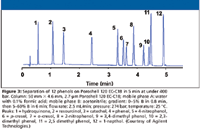
Figure 3
In recent years, there has been a trend in developing bonded silica-based columns with wider pH limits. Most bonded phase silicas are recommended to be use in the pH 2–8 range. At low pH (<2), the bonded phase, especially those with short chain lengths, will hydrolyze leaving behind bare silica. Consequently, retention times will generally change and peak tailing becomes a big problem. At high pH (>8), the silica gel itself will begin to solubilize, a process that is dependent on the solvent, type of buffer, and temperature. By bonding carbon-based phases with sterically protecting groups, with high coverage of long alkyl groups, or by coating the silica with polymeric material the pH range can be extended. By using organo–silica hybrid chemistry, bidentate bonding, and polymer coatings or polymer encapsulation, the range can be further extended to pH 1–12. This year several columns with extended range of pH stability were introduced.
Interesting multimodal C18 phases were introduced by Imakt and SIELC. In addition to the C18 ligand, these mixed-mode phases also contains anion and cation functionality and therefore can operate in three modes, possibly at the same time, depending on the sample being addressed. The columns can retain nonpolar, polar, ionizable, and nonionizable analytes all in the same run.
Ion-Exchange and Ion Chromatography
Besides the ion-exchange columns introduced as part of a family (Table I), as mixed-mode columns (Table II), or as specialty columns, a larger than normal number of introductions were noted for Pittcon 2010. Both polymer-based and silica-based ion-exchange columns were introduced (Table III).
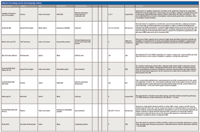
Table III: Ion-exchange and ion chromatography columns
Dionex, a well known provider of ion chromatography columns and instrumentation, presented capillary versions of some of their more popular columns as well as consumables frequently used in IC experiments. The smaller overall dimensions reduces usage of the consumables, reduces waste generation, and reduces cost.
Sepax Technologies, YMC Americas, Agilent Technologies, and Waters all introduced nonporous ion-exchange media, mainly for macromolecules. Nonporous particles provide an alternative approach to conventional porous ion exchangers for the separation of biomolecules. The nonporous media present a lower surface area such that nonspecific interactions are minimized and recoveries of macrobiomolecules enhanced. In addition, the nonporous media gives faster separations. Because the nonporous materials are polymeric, they can be treated with aggressive reagents for regeneration or washing purposes. The ion-exchange capacities for nonporous media are not always as low as one might believe based on surface area. Nonporous strong and weak cation and strong anion exchangers were introduced. These columns were recommended for the separation of proteins, especially antibodies, peptides, and protein variants. Some are available in larger particle size for preparative scaleup.

Companies Listed in This Column
Size-Exclusion Chromatography
In the past few years, only a few new size-exclusion chromatography (SEC) columns have been introduced at Pittcon. That doesn't mean that SEC is not a highly practiced separation mode. It is a standard technique for the separation and characterization of organic polymers, both organic- and water-soluble. In addition, the mode is widely used for the separation of proteins and other biopolymers, sometimes known as gel filtration chromatography. Two companies introduced columns for SEC: Sepax Technologies and Waters.
Sepax introduced its silica-based column line called SRT-C Series, designed for aqueous mobile phase systems. The columns are recommended for the SEC separation of "sticky" biological molecules, such as monoclonal antibodies, structure-modified antibodies, branched biological materials, and protein–water soluble polymer complexes, such as PEG attached monoclonal antibodies. The stationary phase, on 5-μm silica, is hydrophilic and neutral with a coating of nanometer thickness. Six pore sizes in the 100–2000 Å range are available to cover the range of small peptides to large size viruses. High pore volume provides high capacity and high resolution. Compatible with and stable in a wide range of salt concentrations (10 mM to 2.0 M). The SRT-C columns come in standard dimensions of 300 mm × 2.1, 4.6, and 7.8 mm but special sizes with internal diameters of 0.1–30 mm and lengths of 2–30 cm are available; guard columns and bulk packing can also be purchased.
The Waters offering is based upon their bridged ethyl hybrid chemistry and is called Acquity UPLC BEH200. The particle diameter of the packing is 1.7-μm with a 200-Å pore size. The diol surface chemistry provides a hydrophilic media that is compatible with protein samples. The hybrid chemistry gives a wide pH range and temperature stability. Each column is tested with a protein sample to ensure batch-to-batch performance. Column dimensions available are 300 and 150 mm × 4.6 mm.
Preparative Chromatography
Many of the modes covered in the tables in this article have particle sizes that qualify for preparative columns. To some, regular analytical columns with 5-μm particles can give a few hundred micrograms that they consider as preparative quantities. Still others want gram quantities that need larger columns and don't want the columns to cost them an arm and a leg, so they consider these columns packed with larger particles (<10 μm) as preparative sizes. An alternative approach that has been practiced for decades on laboratory benches with self-packed columns but now has been modernized is called "flash chromatography." Today, instrumental approaches have replaced glass columns with gravity feed and the columns are supplied prepacked with materials that resemble HPLC phases. Although the pressures employed are not in the HPLC domain, they are usually several atmospheres so that separations can be performed faster than gravity feed.
Two companies introduced new columns for flash chromatography: Biotage and Grace Davison. The Biotage offering is called SNAP HP-SIL flash purification cartridges. The SNAP cartridges Luer-lock connections do not require compression modules or adapter kits. Packed with 30-μm silica, with pressure stability to 7 bar, the cartridges are available in five sizes ranging from 10 g to 340 g.
The Grace Davison Discovery Sciences Reveleris flash chromatography system employs prepacked SRC cartridges. These cartridges are packed with silica gel or C18 reversed-phase media and are capable of withstanding up to 200 psi pressure. The C18 cartridges are inverted on the flash system to overcome the channeling and voiding that are often problematic in flash reversed-phase chromatography cartridges. An RFID tag on the cartridge streamlines instrument operation by autoloading cartridge specifications. The cartridge sizes range from 4 g to 330 g. They can be used with other manufacturers' flash systems.
A few years ago, Grace purchased ModCol and has been adding to the product line that is dedicated to preparative LC solutions. This year, the Preparative Purification Solutions unit of Grace Davison Discovery Sciences introduced some new preparative accessories. The 1" + 2" Multipacker is a fully mechanical packing unit that can pack Grace's preparative packings (for example, Davisil, Vydac) plus other packings into its MODcol spring column, which is based upon a dynamic axial compression mechanism with an internal spring that eliminates voids and extends column life. The unit can pack a variety of columns with different internal diameters and lengths. In addition, Grace Davison also offers slurry column packing services providing a certificate of analysis with each column. Buchi Labortechnik also introduced a flash chromatography packer called the Cartridger C-670. With this device, flash columns can be packed with particles in the 30–200 μm range in less than 1 min. In addition, these columns will withstand pressures up to 150 psi. The packed cartridges are universal and can be used on any flash system.
Specialty HPLC Columns
Specialty columns are HPLC columns that have been developed for specific separations that are difficult to achieve on a standard column. However, sometimes manufacturers will use a standard column but test it specifically for a certain class or compounds and provide a recommended set of chromatographic conditions. In some cases, the specialty column comes as part of a "total solution" kit with reagents, standards, and a method. Most specialty columns will be delivered with a test chromatogram from an analysis performed at the factory before shipment and some are guaranteed for a specific separation. Table IV shows the 20 specialty columns that were presented at Pittcon 2010. Silica gel–based columns dominated the introductions but a polymer-based specialty column and a hybrid column were also introduced.
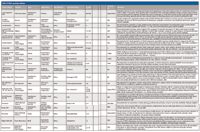
Table IV: HPLC specialty columns
As depicted in Table IV, three main areas dominated the specialty column introductions: proteins and peptides, HILIC, and chiral. The protein–peptide columns were highlighted by the introduction of SPP columns from Advanced Material Technology and Supelco. As explained earlier, these columns provide the efficiency of sub-2-μm columns but have the pressure drop typical of a 2.7-μm particle column. The phases with 160-Å pores have a sterically protected C18 bonded phase that allows peptides to be chromatographed at low pH values.
HILIC is a separation technique for highly polar analytes that gets around some of the problems associated with reversed-phase chromatography such as low retention or phase collapse (dewetting). HILIC uses a polar stationary phase such as bare silica gel, polar bonded phase (diol), certain mixed-mode or zwitterionic phases. Operating conditions usually requires a high percentage of a nonpolar mobile phase, similar to the requirements for normal-phase chromatography. However, unlike normal phase, which uses nonpolar solvents like hexane and methylene chloride and tries to exclude water from the mobile phase, HILIC requires some water in the mobile phase to maintain a stagnant enriched water layer on the packing surface into which analytes may selectively partition. In addition, water-miscible organic solvents are used. Under HILIC, polar analytes are well retained and are eluted in order of increasing hydrophilicity. HILIC is especially favored by mass spectroscopists because ionization efficiency is often enhanced in organic solvents and the presence of lower concentrations of volatile buffer salt compared to reversed-phase chromatography. This year some proprietary polar, amide, hydroxylated-polymer, and amine phases were shown at Pittcon 2010 for the first time. To illustrate a HILIC separation, Figure 4 depicts a separation of some hydrophilic pharmaceuticals on an Acclaim HILIC column (Dionex). Note the high percentage of organic (acetonitrile) in the mobile phase. The later-eluted compounds shown in Figure 4 would be eluted very quickly from a typical reversed-phase column. Although this separation used UV as the detection technique, the volatile mobile phase would be compatible with LC–mass spectrometry (MS).
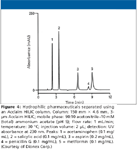
Figure 4
Chiral separations are still in the forefront especially in the pharmaceutical industry. Separations using HPLC and SFC can be achieved by a variety of chiral stationary phases (CSPs). Six new chiral columns were introduced at Pittcon 2010 (see Table IV). The most popular are those based upon cellulose (polysaccharide) phases. Because many analytical separations are scaled up to obtain larger quantities of purified enantiomers, preparative particle sizes are frequently part of column introductions.
Thin-Layer Chromatography
Thin-layer chromatography (TLC) and high performance TLC (HPTLC) are simple techniques that many chromatographers overlook, even when they need only a cursory separation or purity check. Macherey-Nagel is one of the few companies that produce thin-layer products. Their latest product in this market is the Alugram Xtra SIL G, which are unmodified standard silica layers on aluminum (plates). The plates are coated with silica 60 with the following specifications: specific surface = 500 m2/g; mean pore size = 60 Å; specific pore volume 0.75 mL/g; particle size = 5–17 μm. The layered plates are easily wettable for precise colorization results, even with 100% aqueous eluents. The aluminum plates cut easily and reliably due to an optimized binder system and the silica layers do not flake while being cut. The binder used is a highly polymeric product that is stable to most organic solvents and is resistant to aggressive visualization reagents. The thin-layer plates can be obtained with or without UC 254 indicator.
Acknowledgment
I would like to thank the manufacturers and distributors who kindly furnished the requested information in advance of Pittcon 2010, thus allowing a timely report on new product introductions. Manufacturers who would like to be considered for inclusion into Pittcon 2011 coverage: please send primary company contact, mailing address, FAX and e-mail address to David Walsh, Editor, LCGC North America, c/o Advanstar Communications, 485 Rte. 1 South, Bldg. F, Iselin, NJ 08830, Attn.: Pittcon 2011 "Column Watch."
Ronald E. Majors
"Column Watch" Editor Ronald E. Majors is Senior Scientist, Columns and Supplies Division, Agilent Technologies, Wilmington, Delaware, and is a member of LCGC's editorial advisory board. Direct correspondence about this column to "Column Watch," LCGC, Woodbridge Corporate Plaza, 485 Route 1 South, Building F, First Floor, Iselin, NJ 08830, e-mail lcgcedit@lcgcmag.com
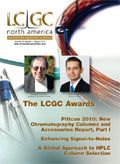
New Study Reviews Chromatography Methods for Flavonoid Analysis
April 21st 2025Flavonoids are widely used metabolites that carry out various functions in different industries, such as food and cosmetics. Detecting, separating, and quantifying them in fruit species can be a complicated process.
Extracting Estrogenic Hormones Using Rotating Disk and Modified Clays
April 14th 2025University of Caldas and University of Chile researchers extracted estrogenic hormones from wastewater samples using rotating disk sorption extraction. After extraction, the concentrated analytes were measured using liquid chromatography coupled with photodiode array detection (HPLC-PDA).

.png&w=3840&q=75)

.png&w=3840&q=75)



.png&w=3840&q=75)



.png&w=3840&q=75)







